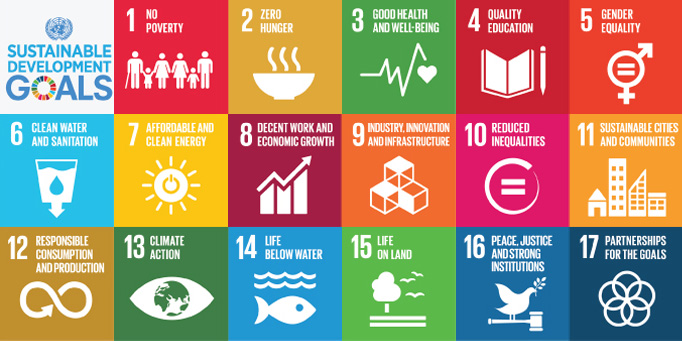Submitted by Sara Serradas Duarte on Wed, 06/12/2017 - 16:27
September 2017 marked the two-year anniversary of the adoption of theSustainable Development Goals (SDGs) as a global framework to focus investments and measure progress in the lead up to2030. Skeptics and advocates of Agenda 2030 agree on one point: achieving theglobal goals will require an unprecedented coalition of people, organizations, and countries to translate rhetoric into reality. It remains to be seen whether international and domestic actors will rise to the challenge.
A new report by AidData, Realizing Agenda 2030: Will donor dollars and country priorities align with global goals?, assesses how global goals crowd in international financing and inform domestic priorities in low- and middle-income countries. Using two novel data sources — Official Development Assistance for 2000-2013 mapped to theSDGs and a survey of nearly 7,000 policymakers — we translate past lessons learned from the MDGs era into forward-looking strategies for governments and organizations to achieve Agenda 2030.
Baseline: How much financing did the SDGs receive pre-2015?
The SDGs may be new packaging, but the majority of ideas they represent predate thepost-2015 era. We analyzed historical ODA flows (2000-2013) for each goal prior to theadoption of Agenda 2030 in September 2015. Using this baseline, we identified which goals have claimed the lion’s share of attention from development partners to date and which parts of the 2030 agenda may be at risk of being left behind.
See our methodology for setting a baseline for funding for sustainable development.
Peace and justice (SDG16) attracted the most ODA during the 2000-2013 period – nearly twice as much as health (SDG3) and partnerships (SDG17), the next highest funded goals which each received around $175 billion. However, even goals that have historically received relatively more financing than others may still face a shortfall. Education (SDG4) and health (SDG3) may be under-financed relative to the anticipated costs to achieve them.
Industry and infrastructure (SDG9) and sustainable cities (SDG11) received the largest shares of ODA among goals that tackle the pressures of economic growth (SDGs7-12). Clean energy (SDG7) and economic growth (SDG8) also saw an overall increase in financing. The three goals related to environmental sustainability — climate change, oceans and marine resources, and forests and biodiversity (SDGs13-15) — received negligible ODA investments by comparison. This may be partly due to limitations in our methodology that are under-reporting investments in this area.
Alignment: Did donors align their financing with the MDGs?
If donor funding matches rhetoric, one would expect to see higher and increasing levels of financing for those goals that were closely associated with the original MDGs (“MDG-like goals) prior to 2015, rather than those that are arguably new with Agenda 2030 (“new goals”). We identified only three completely new goals: SDG 9 (industry and infrastructure), SDG 10 (inequality), and SDG 16 (peace and justice).
Development partners met our standard of “minimum alignment”, in that they gave roughly double the amount of ODA financing to MDG-like goals than new goals during the 2000-2013 period. However, donors were most committed to the MDGs narrative in the early years. Between 2000 and 2005, they increased their ODA allocation to theMDG-like goals by 76 percent compared with 41 percent for new goals. But they subsequently pivoted to new priorities. Between 2006 and 2013, these donors increased their ODA to MDG-like goals by only 7 percent, compared with 37 percent to the new goals.
Influence: How did the MDGs shape domestic policy priorities?
Ultimately, domestic leaders must view global goals as relevant to their national development strategies and influential in shaping country-level priorities if they are tospur progress. According to AidData’s 2014 Reform Efforts Survey,domestic policymakers were highly familiar with the MDGs, considered them to be influential in shaping national development priorities, and viewed them as largely complementary totheir own agendas.
Leaders from Latin America and the Caribbean (79 percent), as well as sub-Saharan Africa (78 percent), were most likely to be familiar with the MDGs, along with those working in sectors explicitly referenced in the goals. For example, over 70 percent of leaders working in health, family and gender, environmental protection, education, and social protection and welfare were familiar with the MDGs.
The survey also revealed that leaders want global agendas to help them identify practical solutions to policy problems, complement existing domestic reform efforts, and signal credibility internationally. Just over a third of survey participants pointed to the ability of the MDGs to help authorities acknowledge policy problems or identify practical solutions as the most important reason for the agenda’s influence.
Roadmap: Five forward-looking strategies to realize the goals
Reflecting upon these retrospective insights, we propose five forward-lookingstrategies for governments and organizations to crowd in financing and help countries make measurable progress on the road to 2030:
- Routinize ongoing tracking of ODA financing to the SDGs in the lead up to 2030 toenable course corrections.
- Incentivize project-level reporting on all sustainable development finance flows, not just aid.
- Invest in more reliable costing estimates disaggregated by goal and target toanticipate shortfalls.
- Focus SDG financing to align with national development priorities for greater influence.
- Create a race to the top for funders to codify financial commitments and report on their follow-through.
For further details, please see the source article here.


